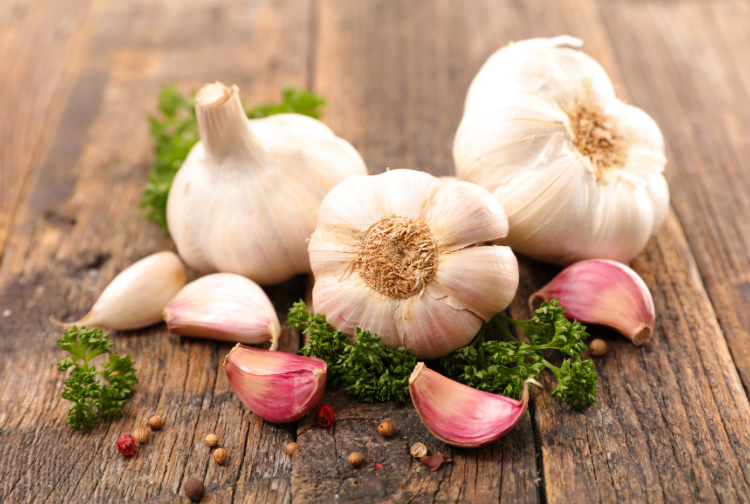Featured
How To Write An Effective Thesis Statement

The thesis statement is simply the one sentence that summarizes the entire paper. It needs to be as concise and compelling as possible without being confusing, but you also want to make sure it is accurate and supports your main point. Some of the apps can also save you from spending too much time on other activities – other than the weekend binge-watching sessions of your favorite shows on Spectrum One of course! With that said, In this blog post, you’ll learn all about how to write an effective statement!
What is a Thesis Statement?
A thesis statement is a sentence or two that tells the reader what your paper is about. It should be specific and direct the reader to what you will be discussing in your paper. A good thesis statement will be arguable and provide the reader with an idea of what to expect from your paper.
How To Write an Effective Statement
A thesis statement is the foundation of an essay, dissertation paper, or any other piece of academic writing. It states the main idea of the paper and outlines the arguments that will be made. A good statement is specific and clear. It sets a specific goal that your paper will achieve. To write a thesis statement, you can check several online tools.
Most importantly, a thesis statement should be arguable. There are three types of thesis statements:
1) Theses that are too vague: These statements do not take a position or state an opinion. They are often too general and leave too much room for interpretation. For example, “Reality TV is ruining our generation.” This statement does not give the reader any information about what arguments will be made in the paper.
2) Theses that are too narrow: These statements are so specific that there is no way to write a paper that would cover all of the points that need to be made. For example, “The United States should ban all reality TV shows.” This statement leaves no room for debate or discussion.
3) Theses that are just right: These statements strike a balance between being too vague and too specific. They are arguable and allow for discussion and debate. For example, “Reality TV has had a negative effect on our society by desensitizing us to violence and making us more accepting of bad behaviour.” This statement provides enough information about what will be discussed in the paper without being overly specific.
Why Is A Thesis Statement Important?
A thesis statement is important for a number of reasons. First, it helps to keep your argument focused. Second, it gives your reader a road map for what’s to come. Third, and most importantly, it is the backbone of your paper and needs to be clear and concise in order to hold up the rest of your work.
If you’re having trouble coming up with a good thesis statement, try this exercise:
- Write down everything you want to say about your topic in one long sentence.
- Go through and highlight the key points that you want to make.
- Turn those key points into complete sentences that will become your thesis statement.
For example, let’s say you’re writing a paper on the effects of social media on society. Your long sentence might look something like this:
“Social media has had a profound effect on our world, changing the way we communicate, interact, and even think.”
Your key points might be:
Social media has changed the way we communicate.
It has changed the way we interact.
Social media has changed the way we think.
From there, you can turn those key points into complete sentences that will serve as your thesis statement:
Social media has changed the way we communicate by giving us new platforms to connect with each other and share information instantaneously.
Social media has changed the way we interact by blurring the lines between our personal and professional lives.
When To Use A Thesis-Statement?
A thesis statement is a sentence or two that tells the reader what your essay is going to be about. It should be specific and direct the reader to the main idea of your paper. A good thesis statement will make your essay more focused and easier to write.
There are a few different situations where you might need to use a thesis statement. The most common time to use one is when you are writing an academic paper. This includes essays, research papers, and dissertations. Your statement should appear in the introduction of your paper, usually at the end. It should be clear and concise so that the reader knows what your paper is going to be about.
Another time you might need to use a thesis statement is when you are making an argument in a debate or speech. In this case, your statement will outline the main point of your argument and why you think it is correct. You will need to support your thesis statement with evidence in order to convince the audience that you are right.
If you are having trouble coming up with a good statement, try brainstorming some ideas with a friend or advisor. Once you have a few potential topics, narrow them down by thinking about what you want to say about each one. Once you have a clearer idea of what you want to argue, it will be easier to write a strong thesis statement.
Conclusion
A well-written thesis statement is the backbone of an essay. It tells the reader what the essay is about and sets up a structure for the rest of the essay. A good thesis statement will usually include a brief overview of what your paper will be about, as well as an indication of your position on that topic. A strong statement can help you keep focused on writing a clear and concise essay, which will impress your reader and improve your chances of getting a good grade.

Featured
Should you go to rehab to start at home treatment Introduction

I have to admit, I don’t know all that much about addiction treatment. So when my wife asked me if we should get inpatient rehab or outpatient treatment, I didn’t really have an answer. What kind of help would you need? How long would it take? What’s the difference between inpatient and outpatient care anyway? Luckily for us (and everyone else who struggles with addiction) there are lots of experts out there who can give us answers! In this post we’ll look at what makes getting clean more difficult when you live at home versus going into an inpatient setting. We’ll also learn how much money you should expect to spend on your recovery journey by visiting different treatment options, including recovery homes and halfway houses too!
Addiction is a deadly disease.
Addiction is a deadly disease. It’s not something you can just “deal with.”
Drugs and alcohol are addictive, which means they take over your mind and body and make it hard to stop using them. But addiction isn’t just about the drugs or alcohol as said by suboxone doctors —it’s also about how they affect your relationships, work life, and health (both physical and mental). If left untreated long enough, addiction can cause serious damage to the parts of your brain that control thinking skills; these changes make it harder for people with this illness to recognize their own behavior as harmful or wrong until after they’ve already done something destructive under its influence.
Your home isn’t always the safest environment for getting clean.
You may be tempted to use drugs or alcohol in your home. This can lead to trouble with the law, or even with other people at home. If you are using drugs or alcohol, it is very important that you get help from a professional who understands addiction issues and knows how to help people recover.
You should not use drugs or alcohol at all if:
- You want to keep your job
- You want other people in your family around (including kids)
Inpatient vs. outpatient treatment
A great way to decide if inpatient treatment is right for you is to consider how long you expect to stay at rehab. If the answer is a month or two, outpatient therapy might be all you need. But if your goal is more serious—like getting sober for good—then it makes sense to invest time and money in an intensive program that will help improve your health faster.
Inpatient programs typically cost more than outpatient ones, but they provide greater supervision and stability during treatment (which can make all the difference when it comes time for relapse). In addition, many people find that being around other patients during their recovery process provides them with motivation as well as support from others who understand what they’re going through.
The real cost of going to rehab
But the real cost of going to rehab isn’t just money. It’s also your time, energy and relationships with family members and friends who care about you.
If you’re struggling with addiction, it’s important to understand that there are many options for treatment—both inpatient and outpatient programs—and there is no one-size-fits-all solution for getting better. You may want to consider inpatient treatment if:
- You have severe symptoms of addiction (e.g., withdrawal symptoms)
- You need specialized medical care from a doctor or nurse practitioner who can help manage an underlying condition like heart disease or diabetes (in addition to treating substance abuse).
Inpatients typically stay at their facility longer than people who live at home while they recover from addiction; this means they’ll be able to get more effective care than those doing recovery on their own time outside the facility’s doors but still being monitored closely by staff members 24 hours a day when not sleeping through the night due either lack thereof or exhaustion caused by long stints awake trying not only fight off cravings but also deal with everyday stresses like work demands or family obligations while simultaneously building up strength needed before returning home again so later start fresh someplace else when ready again after completing another cycle roundtrip journey back out into society after completing last lap around world once more…
Getting inpatient treatment is a process.
Getting inpatient treatment is a process. You will need to fill out paperwork, go through an assessment process and possibly be asked to provide medical records. You may also be asked to provide a list of medications you are taking and/or alcohol and drugs you have taken.
Inpatient rehab and aftercare
Inpatient rehab is a good option for people who are ready to get clean. Aftercare is important to help you stay clean.
Aftercare can be done in an outpatient setting, or at home if the person chooses not to go back into an inpatient setting. It can also be done in a sober living facility if the person has more time than money, but isn’t ready yet for residential treatment (that’s what I did).
There are many reasons to get inpatient care, but not everyone should go to rehab.
Inpatient rehab is a good option if you need help with detox, if you have a co-occurring disorder, or if you have other issues. It’s not a good option for everyone and it can be expensive.
If your addiction is so severe that it’s affecting your life in more ways than just the substance itself—if there are legal issues tied to it (such as driving under the influence), or mental health needs that aren’t being met at home—then going on an inpatient program might be right for you. If this sounds like something that would work best for your situation, contact an addiction treatment center near me today!
Conclusion
There are many reasons to get inpatient care, but not everyone should go to rehab. Inpatient rehabilitation is a process that should be carefully considered and researched before committing yourself to it. You should also consider the cost of such an endeavor and how long you plan on staying in treatment before making this decision. We hope that this article has helped you understand more about what is needed for successful addiction recovery, and why some people might not benefit from the same approach as others do.
Featured
How to Make a Sports Career in India

Sports are a global phenomenon. People of all ages, genders, and nationalities play, watch, and talk about sports. From basketball to soccer and even cricket, this world has it all. Sports are very popular in the U.S. alone. In fact, the average American spends 5.5 hours per week on sports.
This is just the average; some spend a lot more. This popularity has evolved into an industry worth around $500 billion per year. I don’t know about you, but I’d love to get a cut of that.
Making a career in sports is not easy in India. India is known for producing hundreds of thousands of talented sportsmen and women every year. Though they are a part of a talented community, they are also a part of a community that has a scarcity of opportunities and resources. The situation has changed a lot, but still, there is a lot to be done.
Before making a career in sports, you must have a clear understanding of what a sports career means and what the jobs are in the sports industry. You must also know about the best sports career options. The sports industry is one of the most competitive industries in the world.
The competition is not limited to the players but to the management, coaches, and sports management companies. It’s not necessary that making a career in the sports industry is easy. You have to put in a lot of hard work and have a clear vision.
Making a sports career in India is a tough task, but not impossible. It may be even tougher for a woman to make a career in sports, but it’s not impossible. There are many women who have made a name in sports in India. They have not only inspired the youth but have also made the country proud by winning medals for the country.
How to Make a Sports Career in India
Many young people dream of becoming the next Sachin Tendulkar or Virat Kohli. But the harsh reality is that you will need to join a cricket academy to get the right training in India. If you dream of becoming a professional Indian cricketer, then you will have to have an extremely high level of discipline, and you will also have to be willing to put in a lot of hard work.
Many young people who want to become a cricket stars often quit because they are not willing to work hard. A lot of people like to play cricket on the weekends, but that is not going to be enough to become a professional cricketer.
The most important thing you need to do to become a professional in any sport is to find the right coach. The coach will help you develop your skills and make a career for yourself in a sport. If you have that, you will also have to have enough dedication to practice as much as you can.
You need to practice a lot to become good at a sport. If you don’t have the required determination, you will not be able to succeed in a sport. You need to work hard and practice regularly. Practice makes perfect and with practice, vision and the right opportunities, you are set on the path to success.
Featured
Khulna University Admission Circular 2022

KU Admission Circular 2022
Khulna University Admission Circular 2022 for Session 2021-22. Try to get a Khulna University admission test notification. Then this is the right place to gather information. KU Admission Circular 2022 will be published on the official website Ku.ac.bd. We have also published notification and KU admission details in our post. However, you will find KU admission GPA requirements, how to apply and how to sit for the admission test. Apart from that, check the KU admission result in this post. The university is located on the bank of the Mayur river along the Satkhira-Khulna highway road at Gollamari in Khulna. Its academic course started on 31 August 1991 with only eighty (80) students. The Big Thins is no session jam in the academic activities. But admission notification will be published after the HSC result.
Khulna University Admission Result
Khulna University Admission Result 2022 has been released through kuadmiss How to Apply for Online Admission
- First click on Apply Online button on online
- Fill in your SSC/Equivalent and HSC/Equivalent information correctly. If you are a student of Technical-
- Vocational and Technical-DIC/HBM, you must select the Technical Board option.
- Select your unit.
- Check your information again.
- Then click on SUBMIT button.
- Pay your application fee.
We hope the public university entrance exam applicants are happy to get all the latest updates now. In this article, Khulna University is specifically for Bangladesh. Candidates apply for admission tests and get admit cards with seat plans. After the admission test; They will find KU Admission 2023 online on the official website and here too.
Important documents for Khulna University admission
Print copy of online application – 2 copies
Admission Admit Card – 2 copies
Photograph – 8 copies (4 passport size, 4 stamp size)
Photocopy of SSC and HSC attested certificate – 2 copies
SSC & HSC Academic Transcript Photocopy – 2 copies
Photocopy of SSC and HSC Certificate – 2 copies
Cash Deposit Receipt
Character Certificate – 2 copies
Read the admission notification carefully for more details. If you have any confusion about the admission procedure, you can contact the university authorities.
Khulna University Admission Test 2022
Khulna University Admission Test Notification 2022. Khulna University 2021-22 Academic Year Graduation (Honours) First Year Admission Test Notification will be announced very soon. But Khulna University Admission Test Date and Application Period 2021-2022 has been published. Khulna University Admission Test Notification Application Date will be established after tomorrow 1st April (Sunday) 2022. Students can apply by 15th April (Monday) 2022. Khulna University Admission Test 2021-2022 will be held on June (Saturday) 2022. Probable dates for first-year undergraduate admission tests in public universities of the country have been fixed. In the meeting of the standing committee of the public universities of Bangladesh, the date of the admission test is fixed in these universities.
Conclusion
Khulna University Admission Circular 2022 is published on their website. So, visit to know more about Khulna University Admission Test Notification 2021-22. If you have any queries about Khulna University Admission Test Circular, comment below or message us through our Facebook page.
ion.online website. The merit list was released on 16th October 2022. Merit List, Quota Result, and Waiting List Released for KA, KHA, GA, GHA Unit Set Schools, Life Science Schools, Arts & Humanities, Law & Education Schools. School of Social Sciences and School of Fine Arts. Selected candidates will be informed about the merit list through SMS. The admission process will start on 17th October 2022. as per the published merit list. Admission guidelines and notifications for each unit are also published. Khulna University A, B, C, and D unit admission applications are already over. A total of many students applied for it. According to merit, students will get admission to 1 thousand 227 seats. The waiting list will be published subject to vacancies. It is to be noted that the online application for admission to Khulna University started on November 15. The last date for applications was 27th October 2022 at 11:59 PM.

 Travel2 years ago
Travel2 years agoPractical And Essential Car Interior Accessories To Add Comfort And Convenience To Your Drive

 Business2 years ago
Business2 years agoTop Reasons Why you Need to Consider Outsourcing Real Estate Photo Editing

 Business2 years ago
Business2 years agoDead And Co Setlist What They Played At The Gorge Amphitheatre

 Featured2 years ago
Featured2 years agoHow to Make a Sports Career in India

 Health2 years ago
Health2 years agoGarlic Is The Best Vegetable To Treat Heart Problems

 Sports2 years ago
Sports2 years agoHow to watch the ETSU game -What are the benefits of watching the ETSU game?

 Health2 years ago
Health2 years ago5 Reasons to Choose Turkey for Dental Treatments

 Travel2 years ago
Travel2 years agoSpectacular Hot Air Balloon Rides in Goa